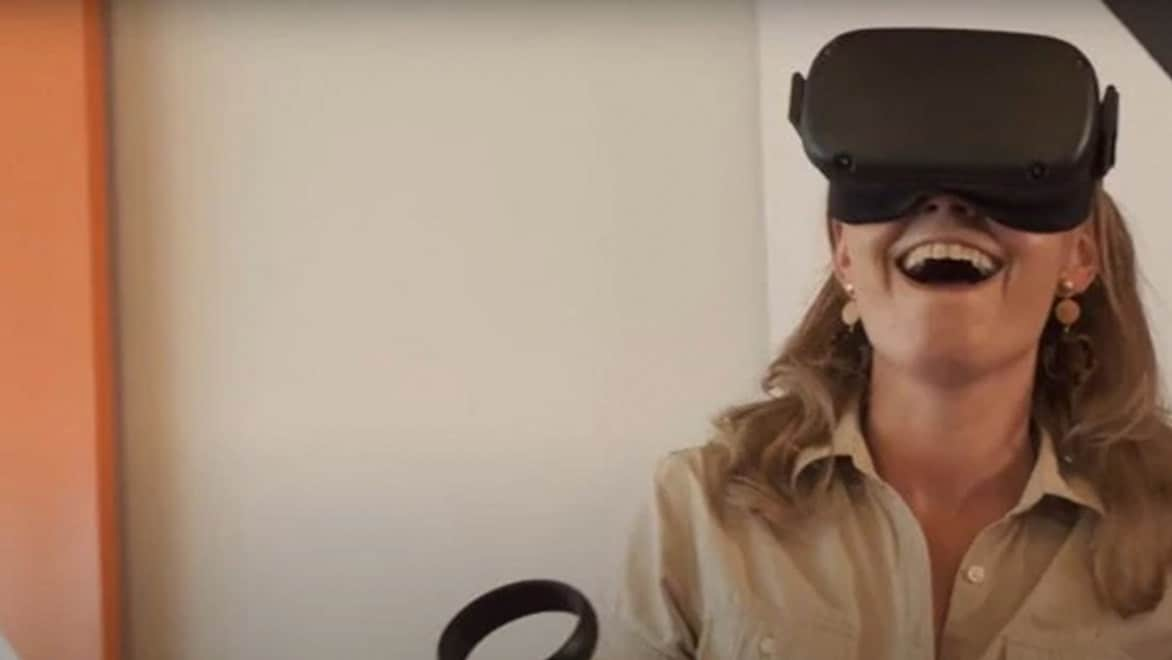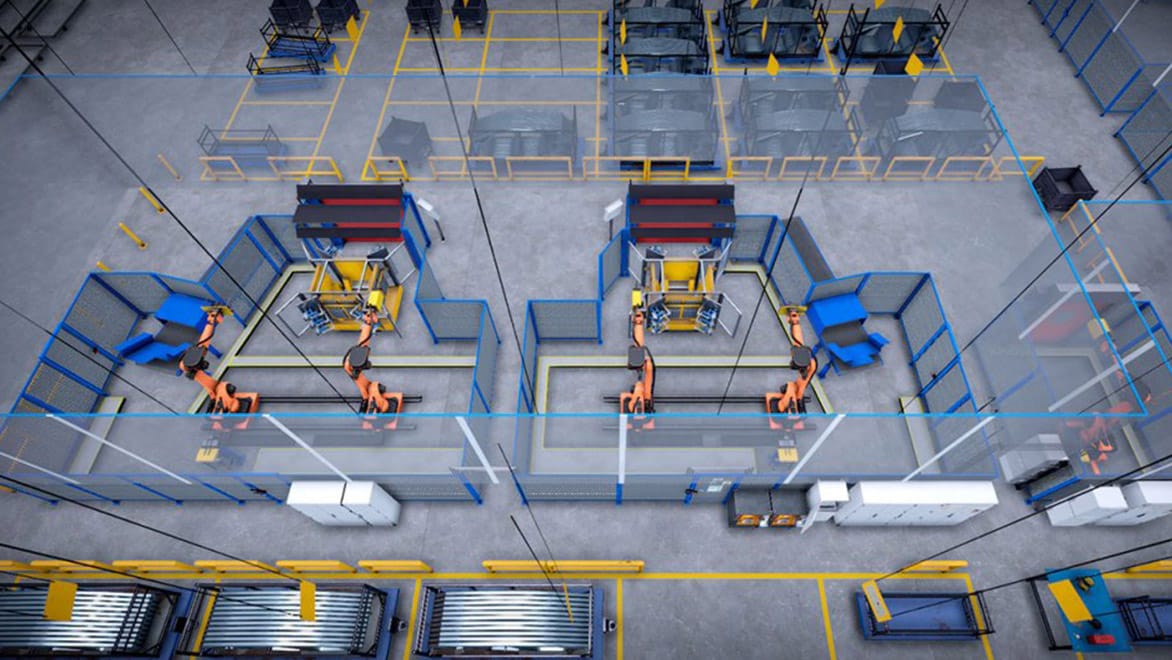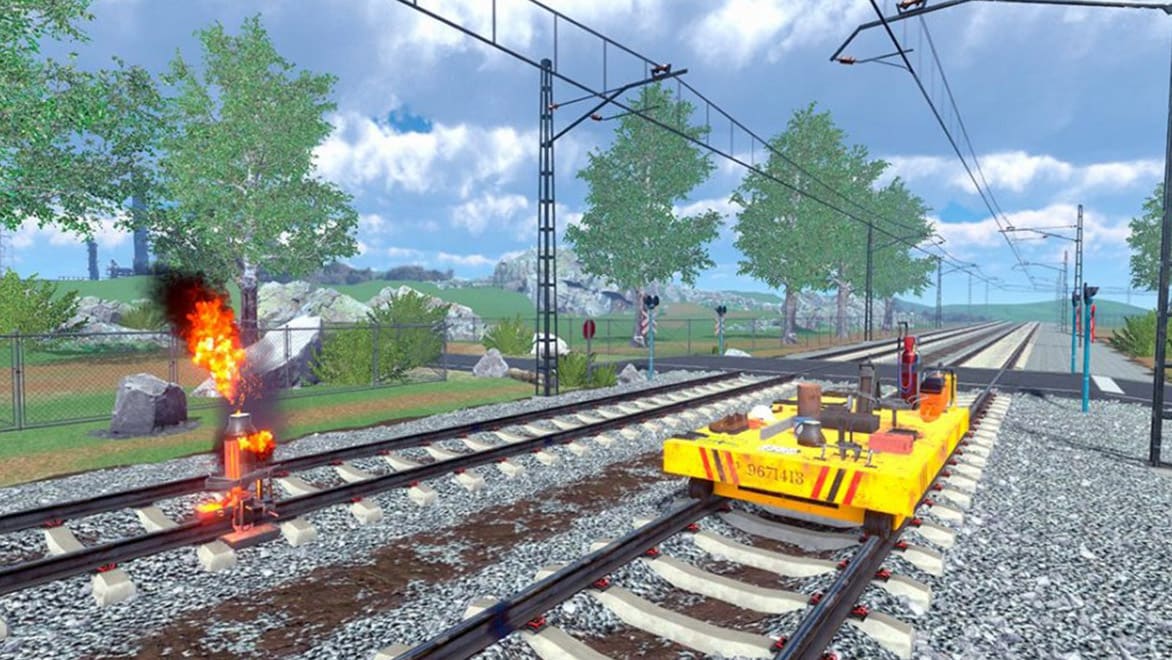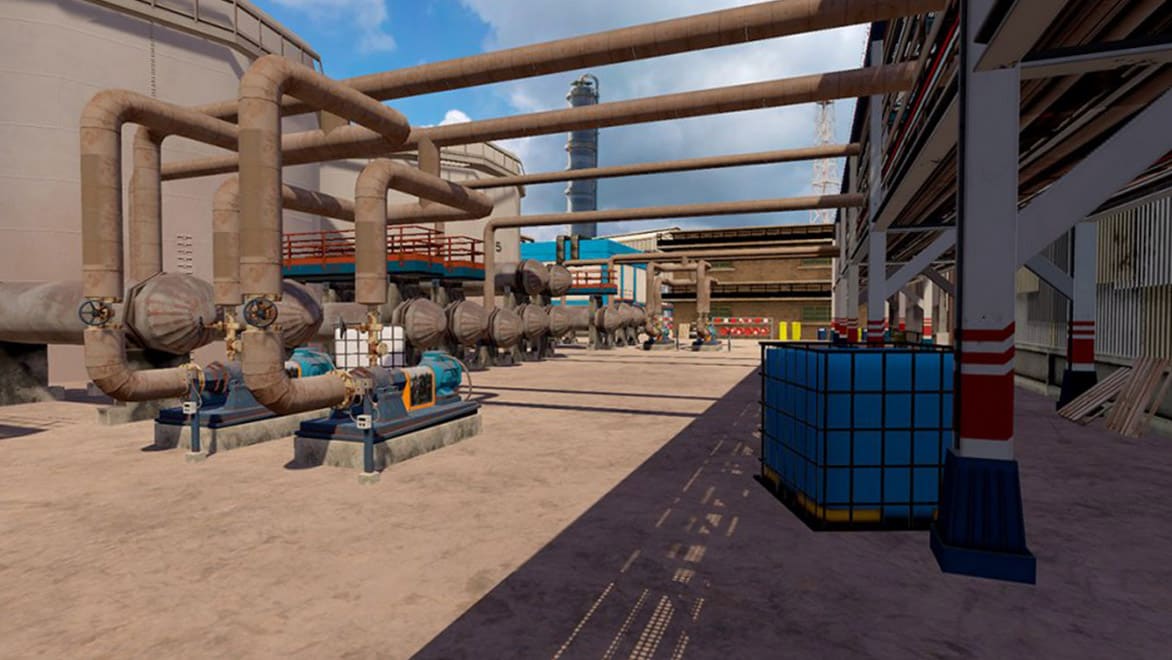LUDUS VR
Virtual Reality for industry and emergency training
FUTURE OF MAKING
Share this story
The immersive experience that saves lives
With the use of the "learning by doing" methodology, the Ludus VR company has opted to offer training services based on Virtual Reality and make its user experience, in first person, an emergency situation without any risk. With this immersive simulation, Ludus VR wants to revolutionize the world of learning by relying on the best Autodesk tools.
The experience that forms Ludus VR
LUDUS is a company created in 2016 to develop VR simulations for industry and emergency. Today, it employs around 30 workers and leads VR projects for world-class companies such as Vodafone, Naturgy, BASF or ThyssenKrupp.
Staying true to its commitment to innovation and the incorporation of the latest immersive technologies in its simulations, LUDUS has managed to become the reference supplier for large companies in the development of VR simulations.
The more than 30 workers in the 3 offices are currently working offer the best VR experiences to their clients, creating simulations that represent with maximum fidelity the facilities, processes and machinery of their customers, so that they can train their operators in an efficient and 100% safe way.

Watch video (2:19 min.)
“Working with Autodesk opens up for us a huge community of developers willing to collaborate and improve together.”
—Jorge González, 3D Artist, Ludus VR
A revolutionary idea with a clear goal
LUDUS aims to improve the competitiveness of its customers through the optimization of the training and safety of their workers. To this end, it develops efficient and effective training and assessment tools for industrial and emergency workers, with the aim of improving both the competitiveness of companies and the safety of workers.
For this purpose, it uses the most innovative immersive technologies on the industry, such as Virtual Reality or Mixed Reality. These technologies allow users/operators to run the protocols and simulated situations themselves without personal risks, which results in a better understanding and assimilation of the knowledge acquired.

Recreation of a confined space.
Why is LUDUS an innovative and pioneering company in its sector?
LUDUS began to develop its own VR technology in 2014. Even before the big VR hardware corporations brought their devices to market. This commitment to VR was validated in 2016, when Facebook, Microsoft and HTC began to market their VR kits and universalized this new technology.
Since then, LUDUS has focused solely and exclusively on the industrial and emergency sector, pioneering the use of VR for training and maintenance in these sectors. Being apioneer and bringing high quality and innovation solutions to its customers, has positioned LUDUS as an international reference in the development of VR simulations for industry and emergency. This is evidenced by companies as Thyssenkrup, Naturgy, Cepsa or the Madrid Fire Brigade, which rely on LUDUS to develop their tools for the training and valuation of their operators.
On the other hand, it should be noted how the constant innovation developed by LUDUS to integrate the latest VR devices in its technology, the thorough research in userexperience and the high quality of its graphics, enables 100% realistic simulations, both in the protocols and in the scenarios.
The challenges of Virtual Reality
The great challenge they face day after day, and the one they are passionate about, is the integration of the latest VR innovations into their technology. In a constantly evolving world, new devices arrive to market every day and it is difficult to become aware of all them. That's why they have created a technology watch unit, whose task is testing and understand such devices to determine which ones are the most valuable in this field.
It should also be recalled that when LUDUS was created in 2016, the VR was not widespread yet and nobody believed in it. This means they made a great effort trying to popularize VR and its excellent benefits, facing also the initial reluctancy that emerging technologies tend to arise amongst people who ignore do not understand them.

Simulation of a railway fire.
Finally, we must remember that LUDUS began as a small startup made up of 4 young people who lacked any funding. This forced them to open doors to third party investors who not only put funds for their project, but also guided them along the way. It is not easy to reach customers like their current ones, namely if you are a small company with no references, as LUDUS was at the time. That's why they trusted their investors at that time to guide them and show how to get to the right doors.
“Thanks to the Collection of Architecture, Engineering & Construction we can work with the information provided by our clients in a more agile and dynamic way.”
—Alexis Alonso, Lead Artist, Ludus VR
Which Autodesk M&E Collection products help LUDUS VR to tackle their project?
They work with Autodesk® M&E Collection products like Maya® in low/high poly modeling and animation. They are currently studying how to improve production time in animation by means of a motion capture suit which can be directly connected to MotionBuilder®.
They also use 3ds Max® for modeling and visualization of industrial files from other engineering software. Autodesk® Character generator helps them to lay the foundations for their characters, which afterwards are given the final sculpting touches in Mudbox®.
Sometimes they use ReCap™ for the photogrammetry of certain elements with potential significance in simulation and which lack additional information. They also keep a close eye on companies that scan industrial plants with drone capture technologies.
They also make use of the Architecture, Engineering & Construction Collection: AutoCAD® shows them the 2D plans of the client's workplaces and offers information about layout and dimensions.
Sometimes they receive 3D objects, such as machines or work areas, which have been created in engineering programs like MicroStation, Catia, Sketchup or Solidworks. They use Navisworks® to view those elements and, most importantly, to change them into formats supported by Maya®, for instance .obj or .fbx.
What are their benefits for the LUDUS team and projects?
Autodesk® M&E Collection has made them more efficient and faster. The art department gets all the tools they need to produce the assets required in their simulations, from the most conceptual aspects to start in Maya with scene blocking to the assets integration phase in Unity.
The Architecture, Engineering & Construction Collection offers them an easiest way to reach their customers. The fact they use the same software as most of their customers shortens their production times dramatically. For instance, Navisworks® not only helps them to convert third-party formats that integrate seamlessly into their workflow, but also those conversion algorithms give them a clean geometry model ready to be used together in Maya.
Is it possible to gather an improvement metric for design time, layout quality, characterization and customization of virtual scenarios, amongst others?
Using the two collections together offers them a much more meaningful and dynamic their workflow and shortens production time, which added to the seamless interconnectivity with their Unity engine makes the whole package very solid and stable. Consequently, their assets are easier to edit, to reuse and to integrate into the engine, thus the Autodesk M&E Collection alone covers 90% of their production needs.

Project of a recreated refinery in VR.
Thanks to Autodesk, they enjoy a more efficient workflow which in turn allows them to cover a larger number of projects at the same time. Finally, they appreciate greatimprovements in problem solution due to Autodesk's good technical service and vast community of users, ready not only to solve doubts and specific problems, but also to suggest quality improvements thanks to the wide possibilities and continuous software enhancements.
Customized support by NKE
Their experience with NKE has been very professional; from the very first moment they empathised with their work philosophy and advised them efficiently in the choice of the Autodesk product best suited for their workflow. NKE guarantees they are always up to date with the latest Autodesk offers and can access to almost weekly Webinars about different sofware and processes.
They feel very grateful for their management and follow-up at LUDUS, looking for working methods that help them to optimize processes and accelerate their production.
The future of LUDUS VR
In the future, LUDUS expects to keep its current reference role in immersive technologies applied to industry and emergency. For this reason, they already research and develop their own technology in order to evolve deeply into immersive solutions and offer Mixed Reality simulations which complement and reinforce their offer. With that in mind, they work internally with their best professionals and collaborate closely with different technological sites.
Furthermore, at the end of 2019 they intend to make the international leap, and start opening up in the European markets, such as Germany, France or the Netherlands.









